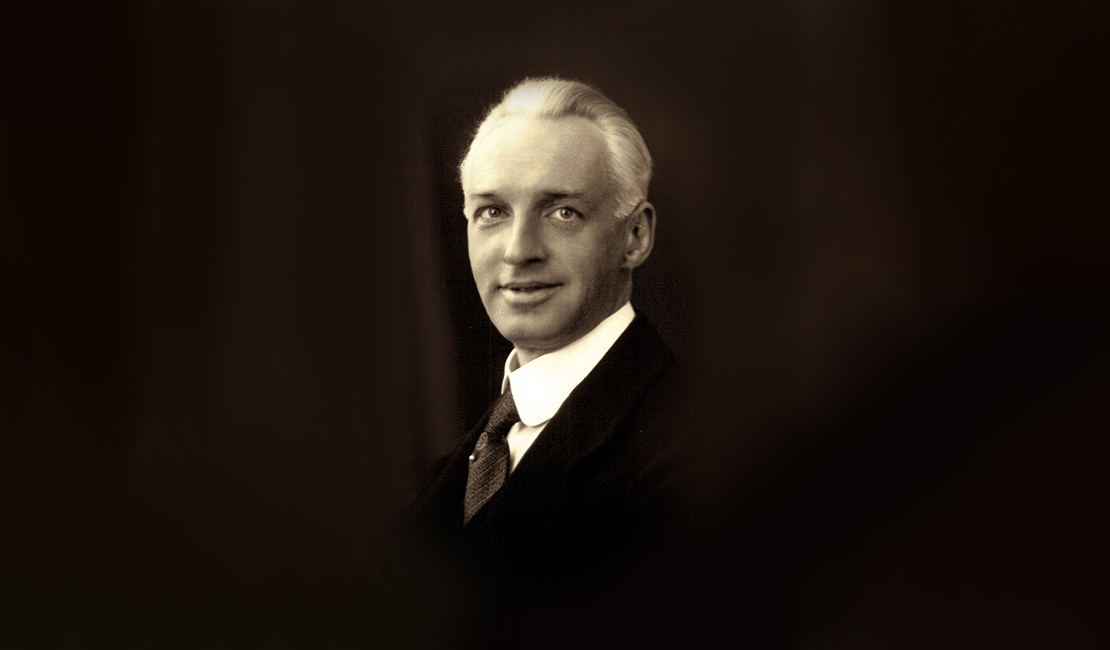The music of Leopold van der Pals

The Dutch/Danish/Swiss composer Leopold van der Pals rode to prominence during the last years of the Belle Epoque - a time where music and art developed at a previously unseen tempo. An era of limitless thinking and exploration of the human nature and mind: from national and late romanticism, impressionism, expressionism and eventually avant-gardism. Leopold van der Pals moved through Europe with a unique ability to adapt to the new art forms and incorporate these into his music.
In the coming years, Edition Wilhelm Hansen will be digging through the archives of Leopold van der Pals and publishing a large number of his works. Bringing them back into the spotlight – some of them for the very first time.
As a composer, Leopold van der Pals sought his own ways to express himself. For his contemporaries, he was at various times considered both a modernist and a post-romanticist composer. For modern listeners, he represents a new perspective on the development from Romanticism to modernism. Lyrical expressionism is perhaps the term that fits the composer Leopold van der Pals best. His music is often composed in a free tonal musical language and composed without any key indications. Unusual chord progressions, modulations and tonal progressions is a key component to the unique sound of his compositions.
The dramatic life
Leopold van der Pals’ life from 1884 until 1966 was very much characterised by the turbulent times in Europe with revolutions, world wars and international tensions making it difficult for an artist with a trans-European background. From his debut concert in 1910 until the 2nd World War, new works by Leopold van der Pals were continuously performed by the most important musicians of his age. Born in Russia, he lived in Berlin and Paris before finally settling down in Switzerland. He grew up in peacetime, but shortly after his debut concert in Berlin, the first world war started, and the chaos that followed continued to varying degrees for the rest of Leopold's life. At times he experienced some of the greatest artistic currents from the front row. He was present at both the premiere of Mahler’s 8th Symphony and Schönberg’s ground-breaking piece Pierrot Lunaire. He met with some of the most well-known artistic personalities, poets, artists and composers of the time, such as Rachmaninov, Gliere, Skrjabin, Koussevitzky, Hausegger and Rudolf Steiner. Throughout it all, he kept meticulous journals allowing us to follow along his compositional and personal journey.
Masterful orchestrator
Among the most successful compositions are the engaging symphonies and dramatic tone poems. Leopold van der Pals was a masterful orchestrator for the big orchestra with a fabulous sense for melody and a unique harmonic language. Leopold van der Pals was taught by his grandfather, Julius Johannsen, professor in music theory and principal for the Saint Petersburg Conservatory. Johannsen also taught Rimsky-Korsakov, Liyadov, Arensky, Vitol and others. Leopold van der Pals’ style is perhaps best exemplified by Symphony no 1 opus 4 and Symphony no 2 opus 52, premiered by The Berliner Philharmoniker and the Vienna Symfoniker respectively. Due to his complex national background, he incorporates elements of Nordic, Slavic, French and German music tradition.
The dramatic orchestral tone poems Wieland der Schmied op. 23, Pan op. 24 and Uriel op. 155 further showcase the fantastic style of van der Pals. With an excellent length for the first half of a concert programme and appealing for any orchestra, they were among the most beloved and performed pieces by van der Pals in his own time.
Van der Pals wrote 252 bigger works in total. Including symphonies, symphonic poems, operas, cantatas, concertos and works for chamber orchestra. Chamber music had a special place in his ouvre: He wrote a number of solo sonatas for piano, violin, cello, viola and harp as well as six string quartets and other chamber music pieces for various instrument combinations. At his death, he left behind an unfinished 9th opera.
Vocal and dramatic works
Works for voice and his dramatic works are among some of Leopold van der Pals’ most interesting pieces and are often based on topics close to his own life. Among them are the opera Eisenhand from 1933 about the pending loss of his wife and the loneliness that follows, and the opera Hero und Leander from 1942 about two lovers separated by the Hellespont that divides the European and Asian continents. They defy everything to be together and eventually die as Death represents the final obstacle to their eternal love. Among his major vocal works, we also find his Requiem from 1935 for choir, strings, organ and solo soprano based on Rudolf Steiner’s writing on death and the big cantate Weihnacht (1927) - also with texts by Rudolf Steiner, premiered by the Berliner Philharmoniker in 1932.
Most of van der Pal's major vocal works were composed during or right up to the 2nd World War, when he composed without any real opportunity to realise a performance. Accordingly, plenty of opportunities exist to premiere van der Pals’ amazing vocal works.
Finally, more than 600 lieds and songs have emerged from the archives of Leopold van der Pals. Many with texts by the poets he was in regular contact with, like Steffen, Steiner, Lienhard, Belyj, Morgenstern. Already published are Eight songs after poems by J. P. Jacobsen (1925).
(March 2023)
